Swifts and Swallows
These birds fly with grace and verve, flitting over fields and wetlands and high above towns and villages.
Swifts and swallows dance on the air, displaying a mastery of flight that is the envy of earthbound humans. These birds fly with grace and verve, flitting over fields and wetlands and high above towns and villages. Though not closely related, swifts and swallows make their living in a similar fashion. As they swoop and soar, both consume aerial “plankton” – flying insects, as well as spiders that have chosen an inopportune time to balloon, or launch themselves into the air on gossamer threads. Both swifts and swallows have also thrown in their lot with humans, depending on us in large measure for their nesting sites. And disturbingly, the population of both birds is on a downward trajectory.
Swallows
Five species of swallow inhabit the Headwaters region. A sixth, the purple martin, lived here at one time and may still, though I saw none when I went searching last summer.
Barn swallows are the familiar forked-tailed swallows of the countryside. The most widely distributed of all the swallows, they are found across wide swaths of North America, Europe, Asia and Africa. In this region look for them darting in and out of old wooden barns and nesting under bridges.
Cliff swallows, the birds of Capistrano fame, are superficially similar in appearance to barn swallows – without the barn swallow’s lavish tail. The two species often use the same artificial supports for nesting: bridges, barns and outbuildings. I found cliff swallows nesting under bridges on King Street at the Credit River just east of Terra Cotta and on Old Church Road at the Humber River north of Bolton. Undoubtedly these swallows also nest in many other locations around the hills.
Tree swallows are handsome birds with metallic blue-green backs and radiant white breasts. They are cavity nesters, often using woodpecker holes. But many raise their families in nest boxes provided specifically for them, or for the bluebirds that share their savannah-like habitat. The tree swallow is a bird that can be readily attracted to your backyard, if you live near a natural area. Moving in shortly after they were offered a birdhouse, a pair nested on my brother’s property in Caledon village last summer.
Bank swallows and rough-winged swallows also inhabit these hills. Though these two species look similar – brownish above and whitish below – the prominent brown band across the upper chest of bank swallows is absent on the rough-wings. Bank swallows nest in colonies, and as befits their name, they create their little homes in banks, either in the artificial sand banks found in quarrying operations or in the natural banks along water courses.
In Caledon, the Lafarge-Aecon pit is home to at least one large colony of bank swallows. Despite my repeated requests, however, I was not invited to enter the quarry, so I watched the swallows from a vantage point on McLaren Road.
Rough-winged swallows can be a challenge to find and identify because they look so much like bank swallows, especially in flight. But unlike bank swallows, rough-wings don’t nest in colonies. Look for them under bridges where they nest in drainage holes. I found rough-winged swallows doing just that under a bridge in Alton and under the Charleston Sideroad bridge over the Credit River just west of Caledon village.
Assuming they are still here, purple martins are the largest of the local swallows. They nest almost exclusively in large apartment-style martin houses. Island Lake Conservation Area next to Orangeville has one such house, but martins have so far eschewed occupancy. Over the past few decades, these birds have abandoned much of their inland range in Ontario, retreating to their optimum habitat along large water bodies such as the Great Lakes.
Swifts
At one time the chimney swift was a common inhabitant of towns and villages across Southern Ontario. Its name came from its fondness for nesting in chimneys. Swifts are brown all over, and though they resemble swallows, their closest living relatives are, surprisingly, hummingbirds.
While swallows glean aerial plankton at various heights, often skimming mere centimetres above lakes and ponds, chimney swifts nearly always forage high above the ground. And unlike swallows, swifts never alight on branches and wires.
Last summer I spotted chimney swifts flying in Orangeville and Bolton. Searches in Erin and Shelburne came up short, but Paloma Plant of the Fatal Light Awareness Project, whose goal is to reduce the number of birds that die as a result of flying into buildings, reported seeing swifts in the air over the Valu-Mart plaza on Main Street in Erin.
Populations in Decline
According to the North American Breeding Bird Survey, a joint project of Environment Canada and the U.S. Geological Survey, the population of chimney swifts and all North American swallows has been declining since data collection began in 1966. Most other birds that feed on flying insects have also experienced troubling population losses. These include flycatchers, common nighthawks and whippoorwills.
Among swallows, bank and barn swallows have undergone the most dramatic declines. And the chimney swift? The Breeding Bird Survey reveals that from about 1970 to 2011 the Canadian population of chimney swifts declined by an alarming 92 per cent. This is a species in freefall, so much so that both the federal and Ontario governments have declared it “threatened.”
What has gone wrong? Habitat loss is nearly always central to the decline of species, and though this may not explain the plight of the urban-loving chimney swift, it is certainly the case for swallows. Suburban sprawl has destroyed vast expanses of swallow habitat.
Beyond habitat loss there is no clear explanation for the decline in the numbers of swallows and swifts, says Mike Cadman, songbird biologist with the Canadian Wildlife Service and an editor of both editions (1987 and 2009) of the Atlas of the Breeding Birds of Ontario. Cadman has suspicions though, and cites several factors that may be hurting aerial insectivores.
“The intensification of agriculture, favouring large fields of corn and soy over pastures and hayfields, has likely lowered insect populations in rural areas,” he says. Anything that drives down insect numbers will obviously have unpleasant consequences for the creatures that eat them.
Cadman also cites studies showing barn swallows have begun nesting earlier in Europe and North America, a behavioural modification that may be an effect of climate change. It is possible these birds and the insects they eat are responding differently to climate change. He suggests the timing of insect availability may be “getting out of sync” with the development of nestlings, creating food shortages at a critical time.
In addition, after swallows and swifts leave the Headwaters region in autumn, they may run into other adversities. “The species that migrate farthest south, like chimney swifts and barn and bank swallows, are experiencing the biggest declines,” Cadman says. This means habitat loss, pesticide use or an unknown dynamic the birds encounter during migration or in their wintering territories in South America may be at fault.
The increase in severe weather may also be implicated. In October 2005 Hurricane Wilma became the most powerful storm ever recorded in the Atlantic Basin. Cadman notes that Wilma coincided “with the peak migration of chimney swifts in eastern North America. Thousands were transported north to the Maritime provinces, where large numbers died.”
Pesticide use here in Canada may also be contributing to the decline. A fascinating project at Queen’s University in Kingston has shed light on how the notorious insecticide DDT affected the insects eaten by chimney swifts.
When researchers examined a large chimney on the Queen’s campus, they discovered a two-metre-high deposit of swift guano, which had accumulated between 1944 and 1992, when the chimney was screened to prevent the birds from entering. The malodorous droppings provided a detailed record of the swifts’ diet over the 48-year period. Tellingly, the swifts’ consumption of beetles, a high-quality food source, dropped in step with the rise in DDT use during the 1950s and 1960s. Beetles are very susceptible to DDT, and the persistent nature of this poison meant it continued to kill them even after it was banned in 1972.
The Queen’s research revealed an indirect effect of pesticides through the decrease in a food source. But these birds can also be directly affected – by eating pesticide-laced insects. One wonders what the successors of DDT are doing to swallows and swifts.
By the way, the screen over the Queen’s chimney has been removed. Chimney swifts have reasserted their claim to its interior and are again donating their droppings to science.
In addition to all this, the humble homeowner ought to shoulder some of the blame for the decline in swift and swallow populations. Most of us are in thrall to a neatness ethic promoted by lawn care companies, fertilizer manufacturers and the makers of lawn mowers and string trimmers. Exotic trees and shrubs, of little interest to native insects, are a mainstay of suburban landscapes. Furthermore, many of us are bug-phobic, ready to reach for the Raid at the least provocation. Few swallows nest in our towns and cities for good reason: there simply isn’t enough food to sustain them.
The transformation of urban and suburban properties should be at the forefront of a campaign to turn back the current tsunami of species decline. We can plant native wildflowers, trees and shrubs, and we can replace some of our turf with vegetation that sustains insects and the birds that rely on them. We need to leave herbicides and pesticides on the shelf. Our neaness fetish must yield to a celebration of the natural. Naturalized yards may be less tidy, but they are far more interesting and life affirming.
Rural residents could also be less concerned with tidiness. Like the Queen’s University swifts, swallows poop copiously. Gerald and Joan Donnelly, owners of a Caledon farm that specializes in geese and ducks, understand this and accept it with aplomb. From April to September they partition their garage to protect their precious incubators from barn swallow droppings.
The other half of the garage is given over to the swallows. The couple park their cars in the driveway until the young birds leave the nests, and they caution visitors not to linger below the swallows’ flight path out of the garage, lest they or their cars be anointed with fecal matter. For the Donnellys, providing a home for the swallows is small payment for the insect control services these birds render.
Don and Joanne Chambers have also made a conscious decision to accommodate barn swallows on their rural property north of Erin. One pair raised three broods in an outbuilding last summer. The mess they made was eclipsed by the joy, and the fine photo opportunities, they provided.
Nesting sites, such as those provided by the Chambers and Donnellys, will be crucial to the success of barn and cliff swallows in the years to come. Old wooden barns are as imperilled as chimney swifts. These buildings are rapidly disappearing, and those that remain are often in an advanced state of disrepair. When they go, so too will the barn and cliff swallows that depend on them.
Perhaps then, we need to provide alternatives. More than any other birds, except the introduced starlings, rock pigeons and house sparrows, swifts and swallows have come to rely on humans for nesting opportunities. Most of our help, aside from providing nest boxes for tree swallows and purple martins, has been entirely unintentional. We didn’t build barns, bridges, quarries and chimneys with swifts and swallows in mind – but it is time to consider doing just that.
With most modern chimneys capped or simply too small to accommodate nesting swifts, researchers in the United States and Canada have begun to experiment with specially constructed “swift” towers. Though some swifts in the U.S. have accepted these structures, swifts in Canada have so far ignored them. We should increase efforts to find a suitable design. There are many successful templates to learn from – the chimney at Queen’s University among them.
In the United Kingdom, the Royal Society for the Protection of Birds promotes the creation of nesting habitat for bank swallows, known there as “sand martins.” Projects like this are worthy of consideration here. In the Headwaters, as in most of Southern Ontario, many bank swallows nest in active quarries, risky places to raise families. Creating sand banks designed to encourage them to nest successfully could benefit parks and conservation areas. These sites would attract not only swallows, but also visitors who want to see them.
In his 2013 book, The Once and Future World, J.B. MacKinnon used the term “habitecture,” which he describes as “the integration of habitat for other species into structures designed for human purposes.” Perhaps it is time to embrace habitecture in architectural design and modify buildings and structures to encourage swifts and swallows to nest.
Could bridges, for example, be designed to encourage even more swallows to take up residence? What about rural houses and outbuildings? What features can be integrated into their design to encourage these birds to nest? How can this be done intelligently so the inevitable droppings fall where they pose little concern? Could faux chimneys be incorporated into the design of government buildings to attract swifts?
Human beings are now the most powerful force shaping the environment. We must become compassionate stewards of that environment. To enhance biodiversity, rather than passively watch it slip away, is among the most noble of goals. We can wring our hands and let swift and swallow numbers continue to diminish, or we can take creative action to halt, and even reverse, the decline of these dancers on air.
More Info
Seeking Swifts
The ice cream vendor raised an eyebrow and told me he didn’t know of any “chimney sweeps” in Shelburne. And why, he wondered, did I need a pair of binoculars to look for one? I left Tony’s Sweet Treats, milkshake in hand, to walk Shelburne’s downtown, looking, not for chimney sweeps, but for chimney swifts. I didn’t find any on that sultry July evening last summer, but I did come across another gentleman with birds on his mind.
He was standing in the driveway of his home on Gordon Street, equipped with two stones, ready, on orders from his wife, to clack them together to keep marauding crows away from the robin nestlings in a crabapple tree. He told me that clacking the stones would send the crows wheeling whence they came. Asked if he had seen any chimney swifts, he answered, “Nope, never heard of them.”
My quest continued two days later, this time in Bolton. I began searching after enjoying a tasty dish of yellow curry at Bangkok Thai Cuisine. I had just about admitted defeat when I heard the characteristic twittering of swifts high overhead. One, two, maybe three swifts careened above Bolton Mill Park along the Humber River. “Yes!” I shouted to no one in particular.
My swift search next took me to Orangeville on July 11. The moment I stepped out of my car on Broadway, I heard them! There seemed to be about six birds, but swifts are notoriously hard to count as they swoop and crisscross high in the sky.
After enjoying a tuna sandwich at the Bluebird Café and Grill, I repaired to Alexandra Park, spent time contemplating the Dufferin County War Memorial, and then craned my neck to watch the swifts silhouetted against the billowing clouds. I wondered how Orangeville appeared to these high-flying birds. And I wondered if they thought at all about the large, colourfully dressed mammals scurrying around far below. I doubted it. But I also doubted the townspeople thought much about them either.
Erin beckoned on July 21. I started with a delicious Reuben on the patio of the Carver’s Block on Main Street. The server told me she enjoyed feeding birds and had been thrilled the previous winter by the arrival in her backyard of a hoary redpoll, a rare northern visitor. Of chimney swifts, though, she knew nothing.
For two hours I walked Erin’s streets, but found the blue skies bereft of swifts. I mentioned my quest to a woman enjoying the fine summer’s afternoon on her Charles Street porch. She thought a moment and then offered, “I know of a chimney sweep in Guelph, but I don’t think you’ll find one in Erin!”

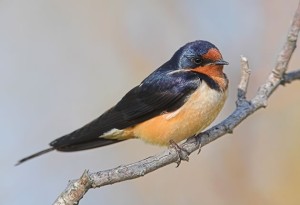
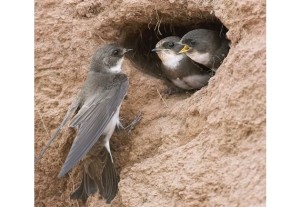
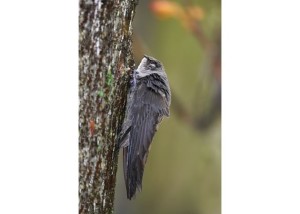
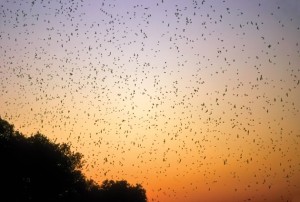
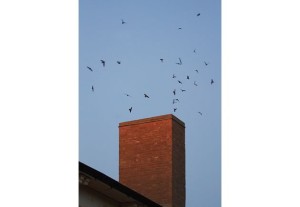
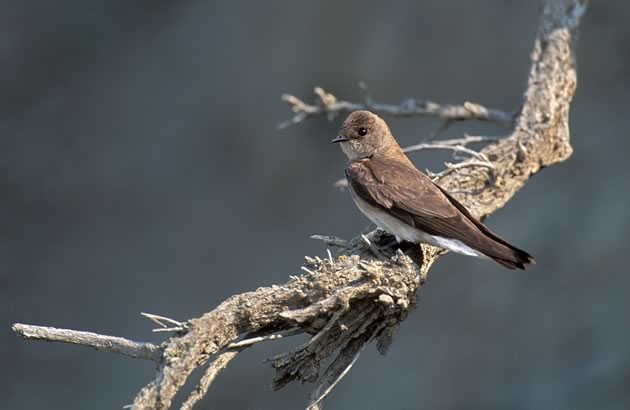
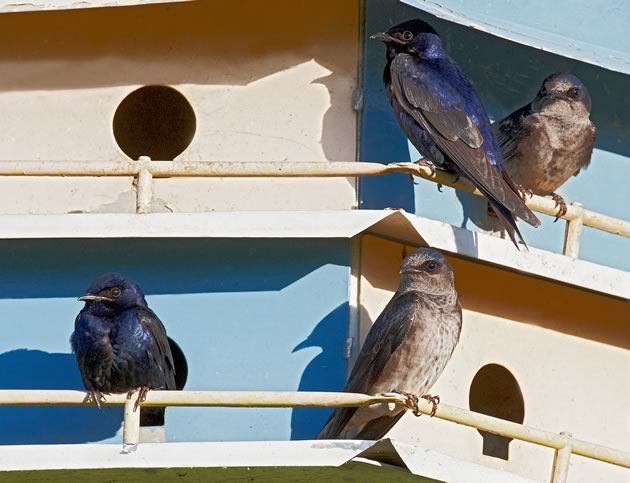
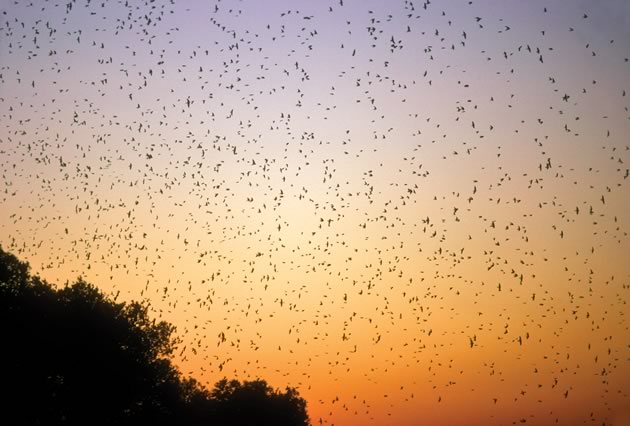
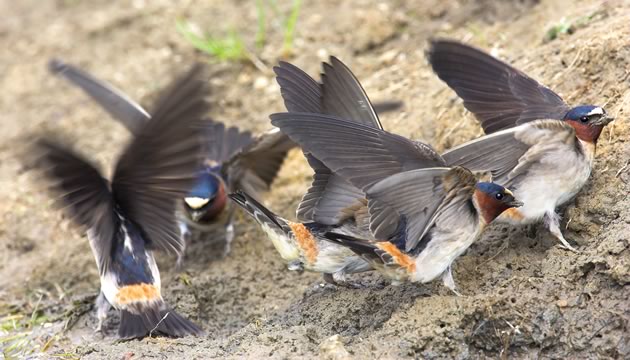
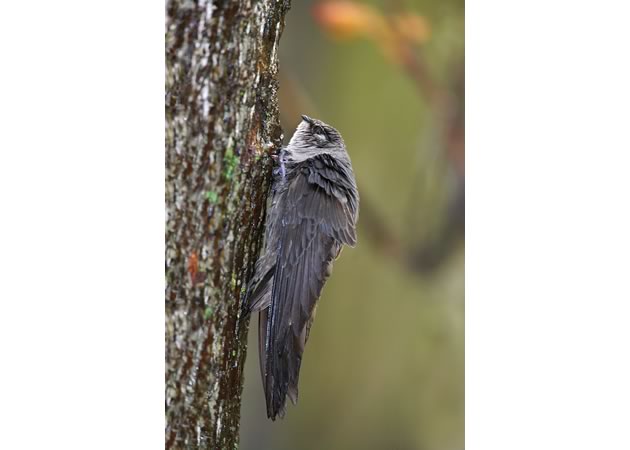
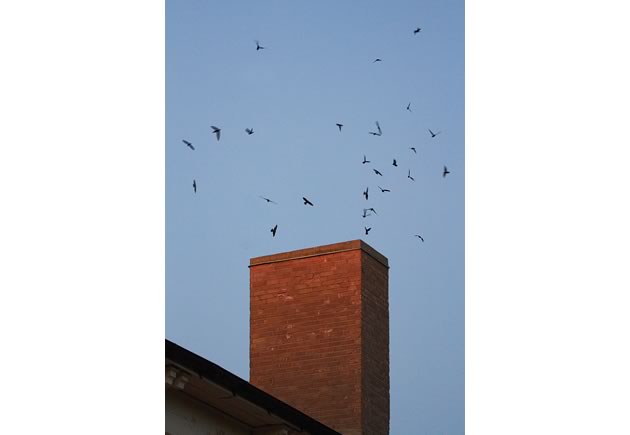
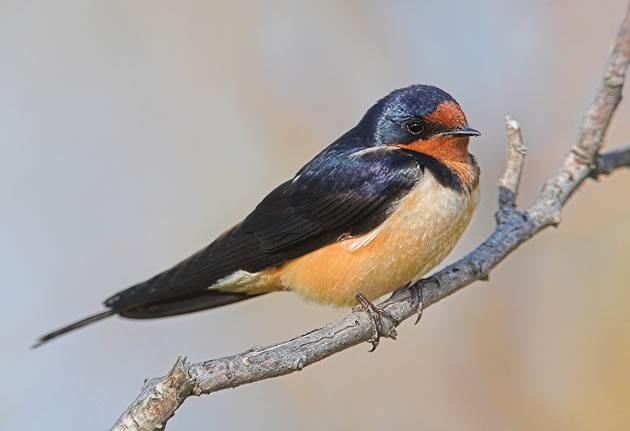
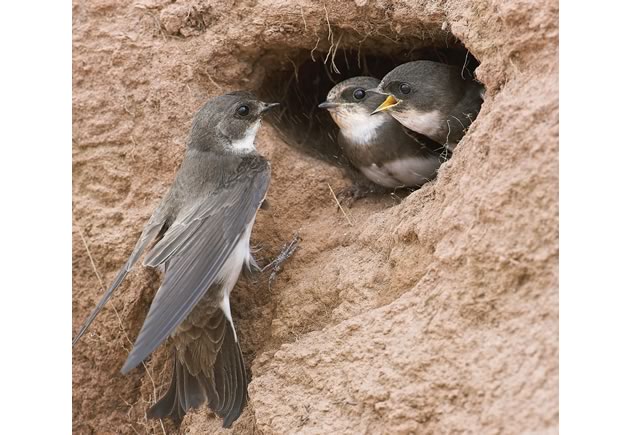
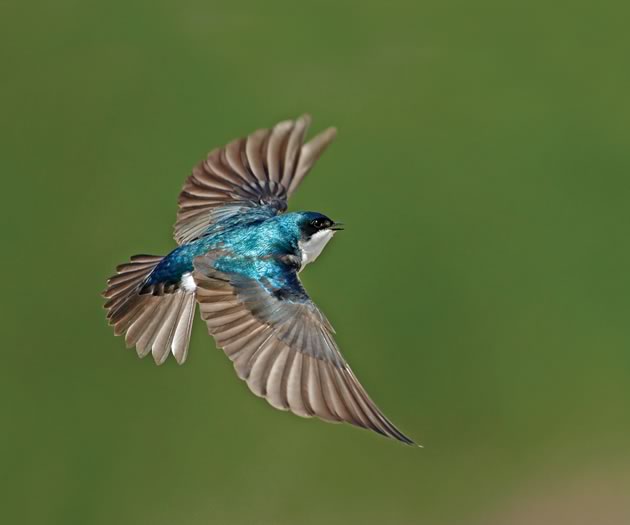






Hello John,
Good to hear from you! It’s disappointing isn’t it? They are declining and it’s disturbing that this is happening even on an active farm like yours. A decline in aerial insects appears to be a major cause… kingbirds forage on flying insects too. As for the red-tailed hawks I haven’t noticed a change in populations and that is backed up by bird study data. Most of our raptors are doing well. But for the birds that feed on flying insects the situation is concerning. And of course flying insects feed more than birds. Dragonflies, bats and others depend on them.
Don Scallen on Jul 19, 2019 at 4:00 pm |
I’ve been commenting this year to my neighbours on the absence of barn swallows in my barns and flying around during hay making. Years back there’d be dozens, this year not a one seen or nesting. My neighbour though reports two barn swallow nests with young but agrees the numbers are way down from years ago. Similarly kingbirds and red tail hawks although a pair of red tails are resident this year.
John Henstock from Grand Valley on Jul 17, 2019 at 8:53 am |
We live on 89 acres between Erin and Guelph, and have always had tree swallows and a couple of bluebirds nesting in the boxes we put up around our paddocks. Last year we had a couple of barn swallows build nests in our barn. The barn swallows are back this year and have built 2 nests and have so far created 2 batches of babies so far. Looks like one nest is starting on a third. In between these 2 nests (on the barn door opener) there is a Robin’s nest. It has been wonderful to see so many fledglings flying in and out of the barn everyday. We have also had a Robin in the front of our house who is now laying her second set of eggs. We also have had a couple of flycatchers take up residence near the barn and the house over the last couple of years. I don’t know a lot about birds but I wondered do the always have multiple sets of babies? We have definitely appreciated these birds eating our mosquitos this year, we have plenty to go around! By the way I loved your article and learned a lot from it.
Laurie Davis from Canada on Jul 27, 2014 at 7:52 am |
What an inspiring report! Your property is alive with birds. I very much appreciate the fact that you are willing to live and let live. Yes, all of the birds you mentioned will typically have multiple broods over the course of the spring and summer. Don and Joanne Chambers (in rural Erin), as mentioned in the article, were graced with three broods of barn swallows last year.
You may wish to install a few larger nest boxes in future. Squirrels will be the probable tenants but, if lucky, screech owls or kestrels (another declining species) could take up occupancy.
Don Scallen
Don Scallen from Canada on Jul 30, 2014 at 2:12 pm |
I wish I had read this article earlier! Don could have sat in our backyard in Caledon East and watched our “tenants”.
When my husband and I moved to our new home there was a mound of earth behind us and we watch swallows fly in and out of this hill of earth until the contractor built homes. My brother, Lloyd, then built us a bird house with 6 compartments which my husband, Larry, installed at top a 10 foot cedar post. Since then we usually have at least two couples which we call our “tenants” and enjoy watching them select which “unit” they will settle into.
Our current tenants have moved out however Don is welcome to visit next year.
Sharon & Larry from Caledon East on Jun 25, 2014 at 5:29 pm |
Thanks for this note Sharon. I am especially intrigued by fact that swallows – likely bank swallows – used the mound of earth on the construction site for nesting. Like the quarries that this species uses, the construction mound would offer only temporary lodging. We should create more permanent nesting sites by creating earthen mounds or banks expressly for the use of these swallows. That a simple mound of earth inadvertently provided these swallows a nesting site, proves that this could easily be done.
Don Scallen
Don Scallen from Canada on Jul 10, 2014 at 11:57 am |